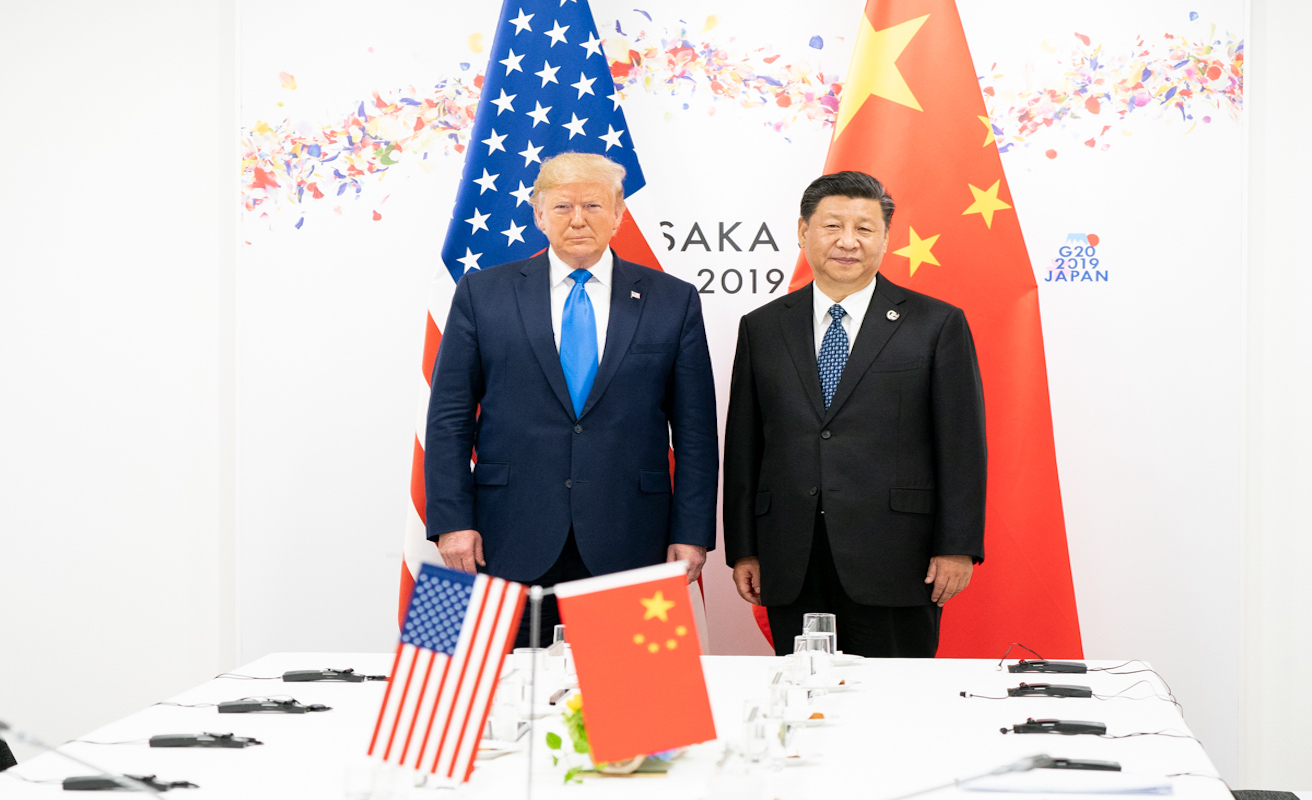Policy Options For Addressing the China-US Trade Imbalance

The explosive trade war between China and the US persists due to the constant imposition of tariffs by either side. The solution lies in the appreciation of the Yuan against the US dollar and liberalising restrictions on US foreign direct investment (FDI) in China.
President Trump’s decision to levy additional tariffs on $US300 of Chinese imports to the United States in response to China’s move to impose new tariffs on US imports is the latest volley in the escalating trade war between the world’s two superpowers.
Despite ongoing bilateral trade negotiations, restarted after the Trump-Xi meeting at the Osaka G20 summit in June, there appears to be no end in sight to the impasse. This is not only affecting economic prospects for China and the US, but the entire world economy.
So far, reciprocal tariffs have hurt China more than the US given China exports more to the US than the US does to China, with the International Monetary Fund (IMF) estimating that trade contraction could shave 1.6 percent off China’s growth over a two year period.
At the heart of the dispute is the size of the trade surplus China runs against a matching US deficit. The trade imbalance raises the following economic questions. What factors drive it? Are tariffs the best way to fix it? If not, what policy alternatives are there?
The trade imbalances between the two countries are usually seen as the difference between export and imports. US tariffs — taxes on imports — simplistically aim to restrict US imports from China, thereby narrowing the imbalance.
While it is definitionally true that trade imbalances are gaps between export and import values, they are better understood as macroeconomic phenomena, reflecting differences between an economy’s total production, or GDP, including for export and its total spending, including on imports.
The US, for instance, produces around 30 trillion dollars worth of goods and services for sale at home and abroad, but as its household, business and government sectors in total spend close to 31 trillion dollars on goods and services, the country’s trade deficit has to be one trillion.
China’s transition to an economic superpower arose from persistently high economic growth rates that began in the early 1980s, at rates some three to four times higher than its trading partners, the US being the most significant.
China’s phenomenal growth over this time lifted over 700 million Chinese out of poverty. Meanwhile, cheap and plentiful Chinese-made products greatly benefited consumers in the US and elsewhere, including Australia, and contributed significantly to keeping global inflation low.
As a result of China’s output growth persistently exceeding its expenditure growth, China experiences trade surpluses with the US, matched by US trade deficits that reflect US households and firms buying cheap Chinese products.
Before the Global Financial Crisis, China’s managed exchange rate was substantially undervalued, putting US producers of goods that competed with China at a competitive disadvantage. The undervalued Chinese yuan also meant US imports into China were more expensive than they should have been.
While the US remains the world’s largest economy, China is now the world’s largest exporter, and replaced the US as the world’s largest manufacturing nation a decade ago.
The US has in the past therefore been right to criticise China for undervaluing its exchange rate against the dollar for an extended period. That artificially conferred a competitive advantage on China’s burgeoning manufacturing industry at a cost to the US through what was effectively a form of industry protection, to which no effective international rules or sanctions applied.
Currency undervaluation is not now the problem it was some years ago because the flexibility of China’s exchange rate has increased substantially. Nonetheless, China’s trade surplus with the US has continued to widen, reaching over $600 billion in 2018.
More recently, US policy concern has shifted to concerns about Chinese appropriation of intellectual property, including from firms investing there, as well as Chinese government to state-owned enterprises directly for exports, for production inputs and via concessional finance.
The Trump administration has aimed to reduce the trade imbalance by imposing tariffs on Chinese imports, beginning with tariffs on steel and aluminium and extended to solar panels and household appliances. The latest threat means tariffs would apply to almost everything else.
China has retaliated by imposing tariffs on American chemicals, coal, medical equipment and soybeans. These measures directly affect the targeted industries but also harm the Chinese and US economies by reducing private consumption, investment and national income, without necessarily narrowing the external imbalance when retaliation occurs.
Hence, imposing tariffs fails on two grounds. First, it worsens economy-wide welfare in both countries, and second, it does not necessarily reduce the trade imbalance.
What other policy options for narrowing the trade imbalance would work then?
Further real exchange rate appreciation of the yuan against the US dollar would reduce the imbalance other things the same, yet may not be feasible given strong yuan appreciation on average over the past decade.
Alternatively, policy initiatives that encourage higher private consumption in China, for instance by improving the social safety net, would increase Chinese expenditure relative to output and narrow the trade imbalance.
At the same time, increased private consumption in China falling on imports would induce greater US production for export to China, thereby increasing US national income.
In addition, liberalising restrictions on US foreign domestic income (FDI) in China, while better safeguarding foreign investing firms’ intellectual property rights, would increase total investment and hence expenditure in China, relative to its output, also reducing the trade imbalance.
By enlarging China’s capital stock, higher foreign investment would subsequently generate higher Chinese national income and living standards.
Meanwhile, additional US investment in China generates higher US national income to the extent the return on US capital invested in China exceeds the return on that capital otherwise invested in the US.
This, combined with greater Chinese consumption, would go a long way toward solving the China-US trade problem, while generating mutual economic gains for both countries.
Tony Makin is a professor of economics at Griffith University who has served in the federal departments of Finance, Foreign Affairs and Trade, the Treasury, and the International Monetary Fund, and as Director of Griffith’s APEC Study Centre.
This article is published under a Creative Commons Licence and may be republished with attribution.




